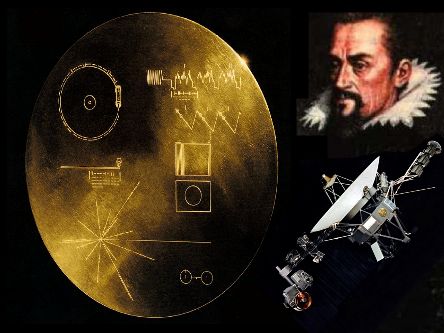For years, scientists have tracked charged particles as they zoom through the cosmos, using deep space probes to measure the particles’ paths and mapping algorithms to translate the data into musical scores.
Now a team of space-music buffs have premiered a new composition to celebrate one of NASA’s most ambitious missions using measurements from mankind’s most distance creation — the Voyager 1 spacecraft.

As we know, the idea that space holds music dates back at least to medieval Europe, and was explored by our main man Johannes Kepler in Harmonices Mundi, in which the genius astronomer mapped the velocity of planets to pitches in order to express their elliptical orbits.
“What we did with Voyager 1 data is really similar to what Kepler did,” researcher Domenico Vicinanza said. “Our sonification is based on the measurements coming from the LECP, mapping the number of particles that reached the detector to sound. The higher the count, the higher the pitch. Every number from the detector becomes then a music note, creating a melody that follows the entire journey of the spacecraft.”
Find out more about how the music of the, urr, cosmos was created or give it a listen below.
Unfortunately the spacecraft won’t be able to beam back information forever. At some 140 astronomical units from the Sun, Voyager 1 can no longer rely on solar power, and its generators are only expected to last until about 2025. At that point, the probe, like Kepler himself, will truly go silent.
No Comment
You can post first response comment.